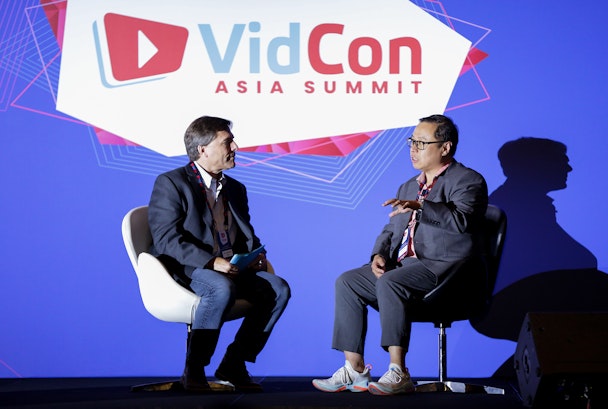Why gaming, eSports and 5G are the keys to Singtel’s international goals
Singaporean telco Singtel is a business in transition. On one hand, it is over 100 years old and still operates as one of Singapore’s largest telco providers, while on the other hand, it is diversifying its business into new areas such as eSports.

Why gaming, eSports and 5G are the keys to Singtel’s international goals
Investing in new areas is key for any business but because Singtel’s international business consists of joint ventures and agreements with local telcos, the hyper-local fragmentation creates a need for new ideas that can cross borders.
Speaking to The Drum at Vidcon Asia, Singtel’s international chief executive officer Arthur Lang, says gaming is fast catching up to video as a key mobile entertainment channel.
“It all started when we looked at what we could do on a regional basis. If we just look at the pure telco part of Singtel, it is multi-local as opposed to regional. That’s because if we have a license in Singapore, it doesn't mean we can use that license and operate in Indonesia, for example. This isn’t the case when we talk about digital entertainment and gaming is a big piece of digital entertainment, you can really cross borders with that. What we did was look at our subscriber base, and we realized that one form of content that was fast increasing in prominence was gaming. It was fast catching up with video,” says Lang.
Lang also explains that there has been a major shift from PC gaming to mobile gaming, particularly in mobile-first markets like Indonesia and India. As a business that wants to ‘own’ the mobile space, this means that gaming became a no-brainer for the business.
The company now has its own eSports league, which this year also expanded to include a corporate league for the first time.
As well as unifying geographic markets, eSports is also helping to unify other growth areas for Singtel. For example, Singtel provides a mobile payment service which can be used to make transactions within games.
Lang says this is particularly important in markets that have a very low credit card penetration, meaning mobile payment becomes the defacto way of purchasing online. “In Singapore, you just use your credit card, it goes through, but in Indonesia, in the Philippines, it's very different. I think credit card penetration is probably less than 5 or 6%.”
With much faster mobile internet speeds via 5G being promised in many South East Asian markets soon, gaming, content and transactions could grow in usage even faster. For Lang, 5G will be a booster to innovation as it opens up possibilities for mobile to become more integrated and physical by tying experiences to the real-world.
“With 5G, if you are a gamer, fast speeds can be dedicated to you. I'm just a WhatsApp messenger person, so I don't need that high speed. 4G today, it's all things to all people. So 5G can be very customized and I think there will opportunities created around this,” he says.
Lang believes 5G will help bring crossovers, such as fitness and gaming. He believes that 5G can power more virtual and augmented gaming experiences that push people to move more. Likewise, linking 5G with cloud technology means that gaming will become more cloud-based, allowing people to start and stop games across different devices in the same spot.
With 5G also helping to bring more power to a greater range of mobile devices, it ultimately acts as a democratiser.
“People will consume content in a very different way, because right now, we take it for granted in Singapore, but I can tell you in India, for example, probably about two-thirds of the population have smartphones. That means one third don't have smartphones. You can't watch a video, you can't watch a game, or you can't play a game. Two years ago, three years ago, that number was probably one third had smartphones. So imagine in three years, smartphone penetration has doubled. As we go into 5G, I can see even faster adoption, because people will say, ‘Wow, I can consume this great content because of the high speeds I want, and devices are getting cheaper, I want to get one’,” he adds.
As technology becomes more democratised, it means it’s imperative for a business like Singtel to become less tied to its traditional business channels. Being agnostic to these trends is turning into major business objectives for the business. Lang explains that Singtel is hoping that 50% of its business will be non-telco and at the moment around 28% is non-telco.
“For us, it's really the platform, and how we can delight our customers and get them to want to come back to our platform over and over again. It's not just to pay your Singtel bill or to buy more data. We want them to come back to watch a video, we want to come back to our platform to play a game, to undertake a transaction because we have mobile payments. If we decide to go and bid for the digital bank license in Singapore, we might be a bank. So that's what we mean by customer engagement. We want to really touch the customer in many ways,” he explains.
For Lang, this puts a greater precedent on building the brand, so its customers trust it enough to keep diverting to its new products and services.
Singtel as a legacy business may need to keep refreshing its business model away from its core services but its core brand is what instils the trust for it to be able to pivot into new areas.
Content created with:

Singtel
Find out more
